I think I’ve got my dates screwed up — got carried away about that Killer Whale Museum that I ended the last post with Lakes Entrance when the title said Phillip Island. Oh well. Here’s that story.
We left our riverside granny flat in Lakes Entrance early; another longish day ahead. Stopped at the town of Lakes Entrance and walked over the footbridge to 90 mile beach, which was windy and amazing. Lakes Entrance is situated on the eastern end of the Gippsland Lakes, just east of the artificial entrance of the lakes to the sea. The shores of the Gippsland Lakes were inhabited by the Tatungalung tribe, evidenced by middens which exist in bluffs east of the town. The Aborigines were hostile to the first pastoralists who arrived in the area in the late 1840s. The first homestead was near the natural entrance, which was east of the present town, in the vicinity of Lake Bunga. The natural entrance to the lakes from the Bass strait was unreliable and often dangerous. After much agitation, work began in 1872 to cut an artificial entrance, west of the natural entrance. As we drove out of town, the view was astounding — the lakes and the cut to the sea were azure and the sand white and the trees so green. It was stunning. And there were dozens of black swans!
And on we drove. At a gas stop in a small town, evidence of history with a trompe d’oeil mural. And then we crossed over a short-ish bridge to Phillip Island. Which I would liken to Martha’s Vineyard, but with a bridge. It’s a day trip from Melbourne, and is 16 miles by 6 miles, so a little larger but very much a beachy holiday place. It is also important to wildlife, as the short-tailed shearwaters make their annual migration down from the Aleutian Islands to nest on the island. The hooded plover also nests on the beach.
But the draw for thousands of tourists is the nightly Little Penguin Parade.
Phillip Island residents Bern Denham, Bert West and Bert Watchorn began to take tourists by torchlight to see the little penguins’ nightly arrival on the beach on the Summerland Peninsula in 1927. Little penguins (Eudyptula minor) are the smallest of all penguin species, they stand approximately 33cm tall and weigh around one kilogram, with males weighing slightly more than females. Little penguins breed in colonies along the southern coastlines of Australia and New Zealand, with Phillip Island in Victoria home to an estimated 32,000 breeding adults. Little penguins spend 80% of their lives at sea swimming and foraging for food, and return to their nesting burrows on Phillip Island to breed, raise chicks, moult and to take a break after days or weeks spent at sea. It is when little penguins return to land, at sunset each day that tourists all pay their $$ to sit and watch as they come up from the sea in groups of 10-12 after sunset, and then climb a sand hill to get to the burrows that are in the hillside off shore. There are boardwalks for all the people who just stare as the little creatures call out to each other and mothers feed their babies and they continue their march. No photos are allowed, so the only photo I’ve got here is from Mr. Google. It was delightful to watch them — you can’t help but smile as they waddle in from the surf and then struggle up the sand hill, almost looking like lizards as their little fins try to grab hold of sea grass.
This morning we left Phillip Island. Will wanted to get home to his life and it’s a long drive back, so he graciously dropped me at a Melbourne hotel. I walked through some lovely parks and collected brochures from the information center for the days I will be here. The parks are lovely, and the tram lines running overhead look like spider webs over the intersections. I check into an airbnb tomorrow and will make myself either a long term tourist or a native of Melbourne over the next weeks.
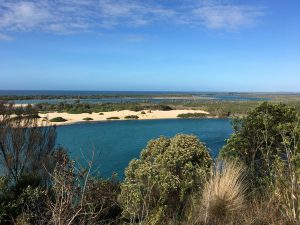
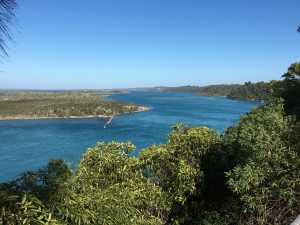
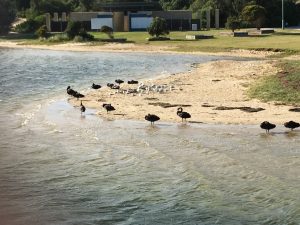
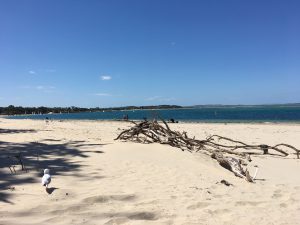

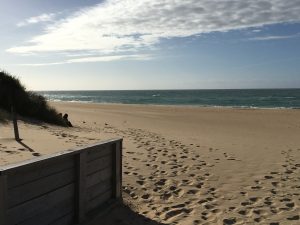
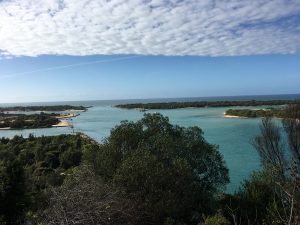
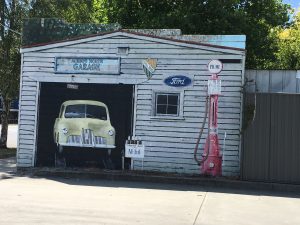

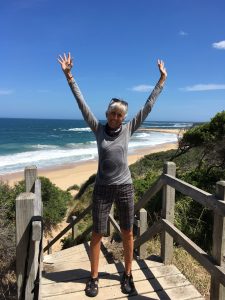
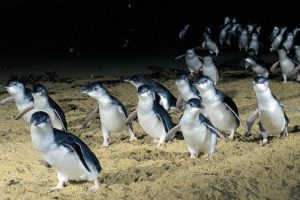
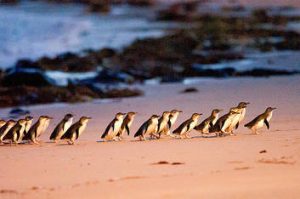
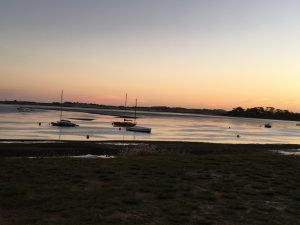
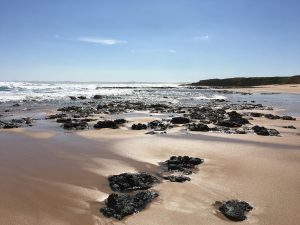
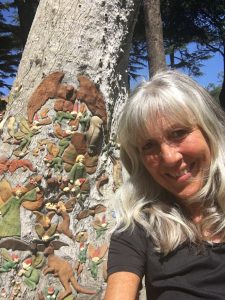
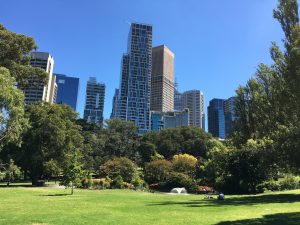
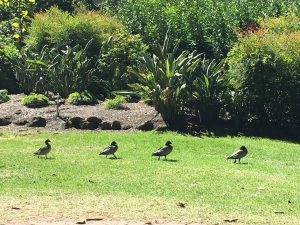
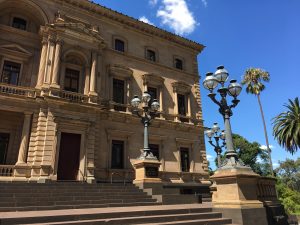
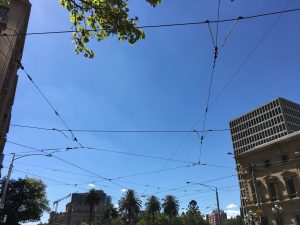
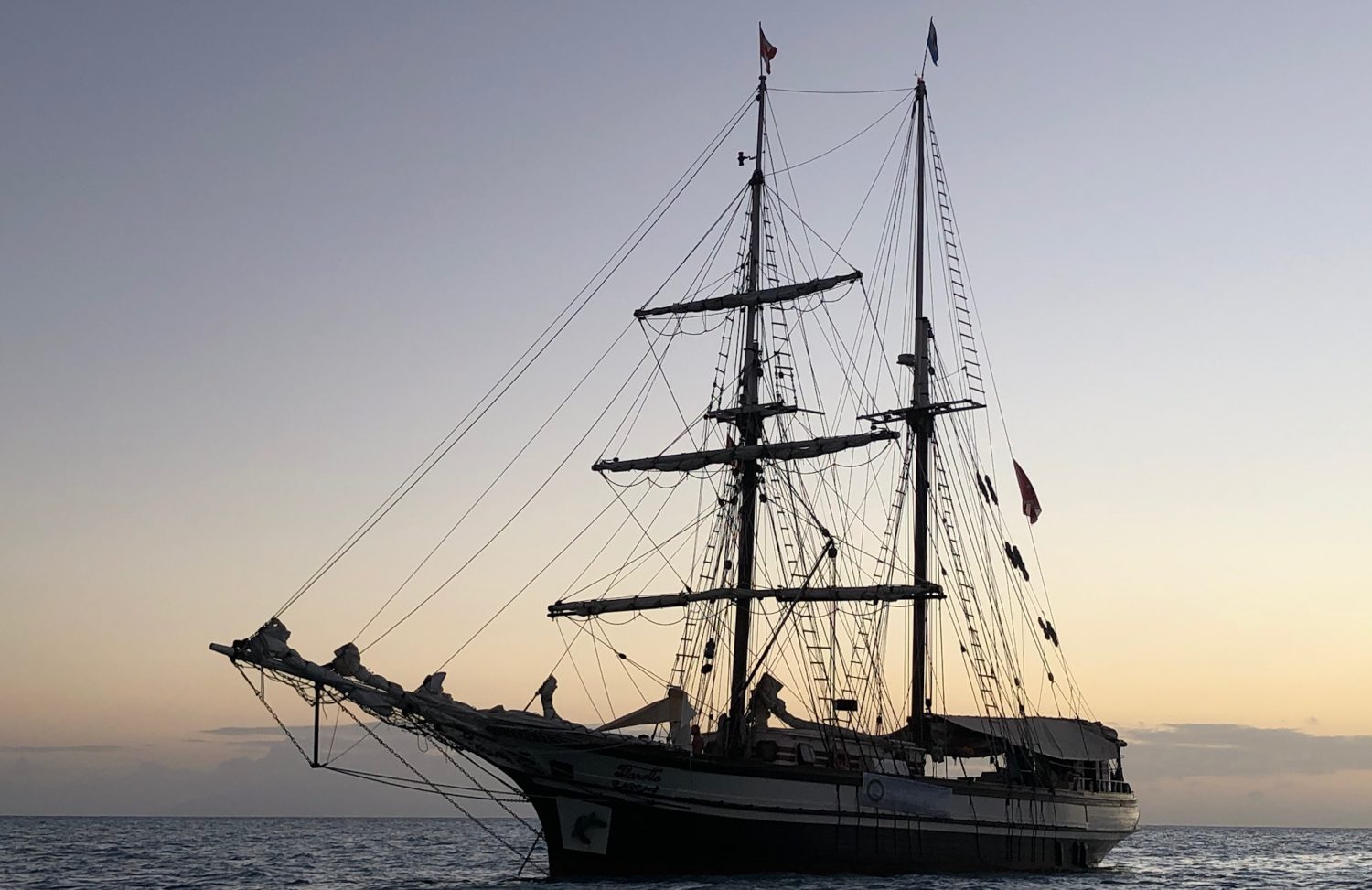
Sounds like perhaps they are doing eco tourism right, down there. One hears so much about locals trying to survive by doing nature show-and-tells for tourists, but their very presence (sound, lights) are throwing off natural behaviors, including abandonment of rookeries and thwarted migrations. Kudos to your Southern Hemisphere pals!
Fabulous photos – as always!